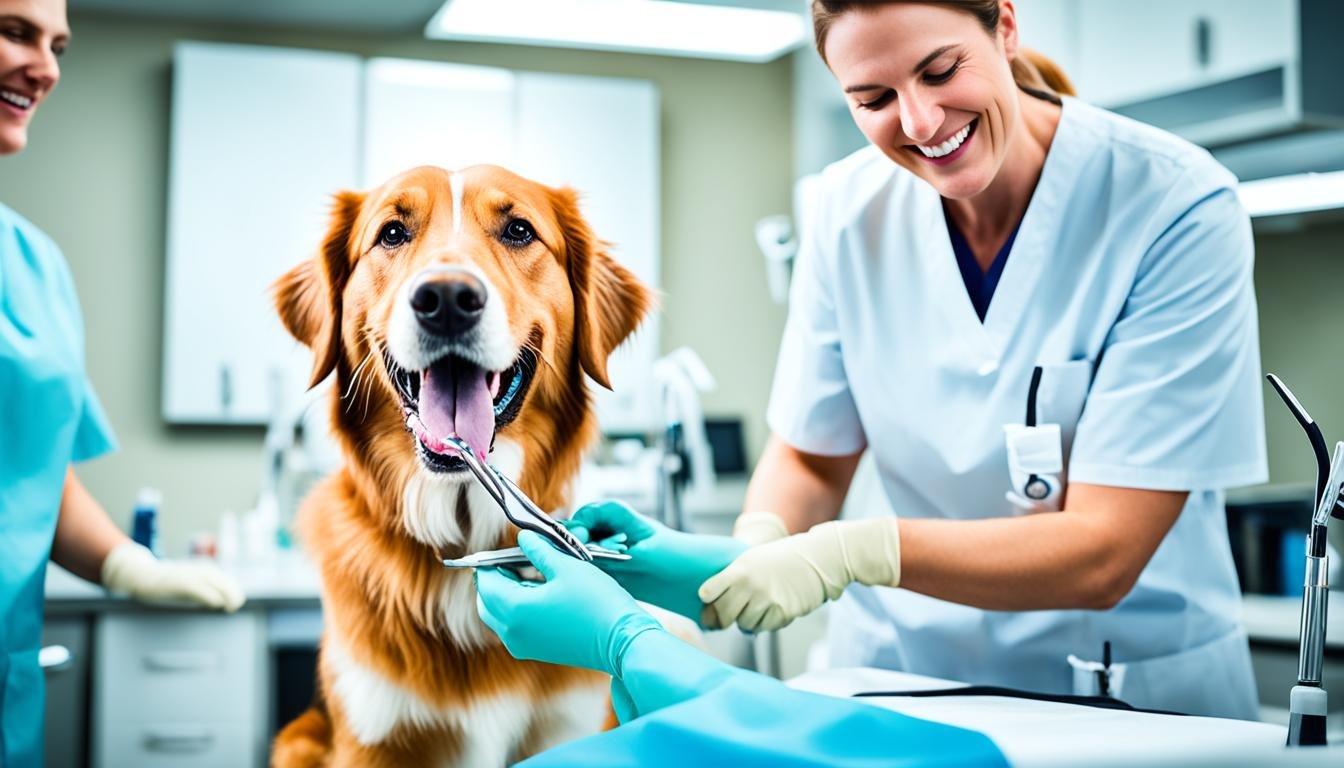
As a pet owner, keeping your furry friend healthy and happy is a top priority. One crucial aspect of maintaining your pet’s health is managing their weight. Just like humans, pets who are overweight or underweight can face numerous health problems, including joint pain, diabetes, and heart disease. In this article, we will provide expert tips on pet weight management, including assessing your pet’s weight, creating a balanced diet, portion control and feeding guidelines, regular exercise, seeking professional advice, and pet first aid and emergency care.
By following the advice provided in this article, you can ensure that your pet stays healthy and fit for years to come. Let’s dive into the importance of pet weight management and how you can help your furry friend maintain a healthy weight.
Why is Pet Weight Management Important?
Pet weight management is crucial for your pet’s overall health and well-being. Just like humans, excess weight can put pets at risk for a variety of health problems, such as:
- Diabetes
- High blood pressure
- Heart disease
- Joint problems
- Respiratory issues
Additionally, overweight pets may experience a decreased quality of life, as they may struggle with mobility and have difficulty performing regular activities such as playing or going for walks.
On the other hand, underweight pets may not be getting the necessary nutrients they need for optimal health and may be more susceptible to illness and disease.
By managing your pet’s weight, you can help them live a longer, happier, and healthier life.
Assessing Your Pet’s Weight
Assessing your pet’s weight is an important step in managing their overall health and well-being. It can be difficult to determine if your pet is overweight or underweight just by looking at them, so it’s important to understand how to assess their weight accurately.
| Method | Description |
|---|---|
| Visual Assessment | Visually examine your pet from above. Look for a visible waistline behind the ribs. If your pet is overweight, there will be no waist, and if they are underweight, the waist will be very prominent. |
| Body Condition Scoring | Body condition scoring is a method used by veterinarians to determine if a pet is underweight, overweight, or at an ideal weight. This method involves feeling your pet’s ribs, spine, and other bones to assess their body fat percentage and overall condition. |
It’s important to consult with your veterinarian to determine if your pet is at a healthy weight and to develop a weight management plan if necessary.

Creating a Balanced Diet for Your Pet
When it comes to your pet’s diet, it’s important to ensure they are getting the necessary nutrients while managing their weight. A balanced diet for your pet should consist of:
| Protein | Fat | Carbohydrates |
|---|---|---|
| A high-quality protein source such as chicken, fish, or beef. | A moderate amount of healthy fat such as fish oil or flaxseed oil. | A small amount of carbohydrates such as sweet potato or brown rice. |
It’s important to note that the specific dietary requirements for your pet may vary depending on factors such as breed, size, and age. Consulting with your veterinarian can help you create a personalized diet plan for your furry friend.
Additionally, avoid overfeeding your pet and giving them table scraps as this can contribute to weight gain and other health issues. Stick to a consistent feeding schedule and measure out the appropriate portion sizes for your pet’s size and weight.
Remember, a balanced diet is critical for maintaining your pet’s overall health and well-being.

Portion Control and Feeding Guidelines
Portion control is an essential factor in pet weight management. Overfeeding or underfeeding can lead to weight issues that can affect your pet’s health and well-being. Feeding guidelines can help you determine the right amount of food to provide for your pet.
When determining portion sizes, consider your pet’s size, age, activity level, and overall health. Avoid leaving food out all day and instead, establish a feeding schedule. This schedule can help regulate your pet’s intake and prevent overeating.
Monitor your pet’s weight regularly, and adjust the portion sizes accordingly. If your pet needs to lose weight, gradually reduce the amount of food they receive while maintaining a balanced diet.
Note: Treats can also contribute to weight gain. Limit the number of treats and ensure they are low in calories. Consider using fruits and vegetables as healthy alternatives.
| Feeding Guidelines for Dogs | Feeding Guidelines for Cats |
|---|---|
|
|
 Remember, proper portion control and feeding guidelines can help your pet maintain a healthy weight and prevent health complications. When in doubt, consult with your veterinarian to develop a personalized feeding plan for your furry friend.
Remember, proper portion control and feeding guidelines can help your pet maintain a healthy weight and prevent health complications. When in doubt, consult with your veterinarian to develop a personalized feeding plan for your furry friend.
Pet Exercise: Keeping Your Furry Friend Happy and Healthy
Regular exercise is an essential component of pet weight management. Not only does it help your pet maintain a healthy weight, but it also enhances their mental and physical well-being.
When it comes to exercise, the type and duration largely depend on your pet’s age, breed, and overall health. However, as a general rule of thumb, dogs need at least 30 minutes to 2 hours of exercise every day, while cats thrive on daily play sessions that mimic hunting behavior.
Some fun and engaging activities to keep your pet active and healthy include:
- Walking: A brisk walk is a great way to get your dog moving and socializing with other pets.
- Running: If you have an active dog, consider taking them for a run or jog.
- Swimming: Swimming is an excellent low-impact exercise that can be beneficial for dogs with joint problems.
- Playing fetch: Dogs love to chase and retrieve objects, making fetch a fun activity for both pets and their owners.
- Interactive toys: Toys that require your pet to work for their food or treats can provide mental stimulation and exercise.
- Scratching posts: Cats love to scratch, so providing them with a scratching post or pad can encourage them to stay active and maintain healthy claws.
Remember to start slow and gradually increase the intensity and duration of your pet’s exercise routine. Also, be mindful of the weather conditions, especially during hot or cold seasons, to prevent dehydration, heat exhaustion, or hypothermia.
Finally, always consult your veterinarian before starting any exercise program, especially for senior or overweight pets. Your vet can recommend a safe and effective exercise plan tailored to your pet’s individual needs and health concerns.

Seeking Professional Advice
While implementing a weight management plan for your pet, it is important to seek professional advice from your veterinarian. They can provide tailored recommendations and guidance based on your pet’s individual needs and health history. Your vet can also ensure that any underlying medical conditions or medications are taken into consideration when creating a plan for your pet.
Regular check-ups with your vet can also help track your pet’s progress and make necessary adjustments to their plan. In addition, consulting with a veterinary nutritionist can provide further insight on creating a balanced diet for your pet.
By working with a professional and creating a personalized weight management plan, you can set your pet on the path to a healthy and happy life.

Pet First Aid and Emergency Care
As a pet owner, it’s essential to prepare for any unexpected situations that may arise. Knowing basic pet first aid and emergency care can make a significant difference in your pet’s health and well-being.
Start by creating a pet first aid kit that includes items such as bandages, gauze, scissors, and antiseptic wipes. Keep this kit in a easily accessible place, such as in your car or near your pet’s food and water bowls.
In case of emergencies, it’s crucial to have the contact information of your veterinarian and local animal hospital on hand. Additionally, consider enrolling in a pet first aid and CPR course.
It’s also important to know the signs of a pet emergency, such as difficulty breathing, seizures, and excessive bleeding. If you suspect your pet is experiencing an emergency, seek veterinary care immediately.

“In emergencies, acting quickly and calmly can save your pet’s life. Be prepared and know what to do in case of an emergency.”
Pet Weight Management Conclusion
In conclusion, pet weight management is an essential aspect of maintaining a healthy and happy pet. By following expert tips and guidelines, pet owners can accurately assess their pet’s weight, create a balanced diet, practice portion control, and provide regular exercise to promote weight management and overall health.
It is crucial to seek professional advice from a veterinarian to develop a tailored weight management plan for your pet. Additionally, pet owners should consider obtaining pet first aid training and emergency care knowledge to keep their pets safe and protected in unexpected situations.
Remember:
- Manage your pet’s weight to prevent health problems.
- Assess your pet’s weight accurately.
- Create a balanced diet for your pet.
- Practice portion control and feeding guidelines.
- Provide regular exercise for weight management.
- Seek professional advice from your veterinarian for a tailored weight management plan.
- Obtain pet first aid training and emergency care knowledge to keep your pet safe and protected.
By incorporating these tips and guidelines into their daily routines, pet owners can ensure their furry friends lead a happy and healthy life.
RELATED POSTS
View all


